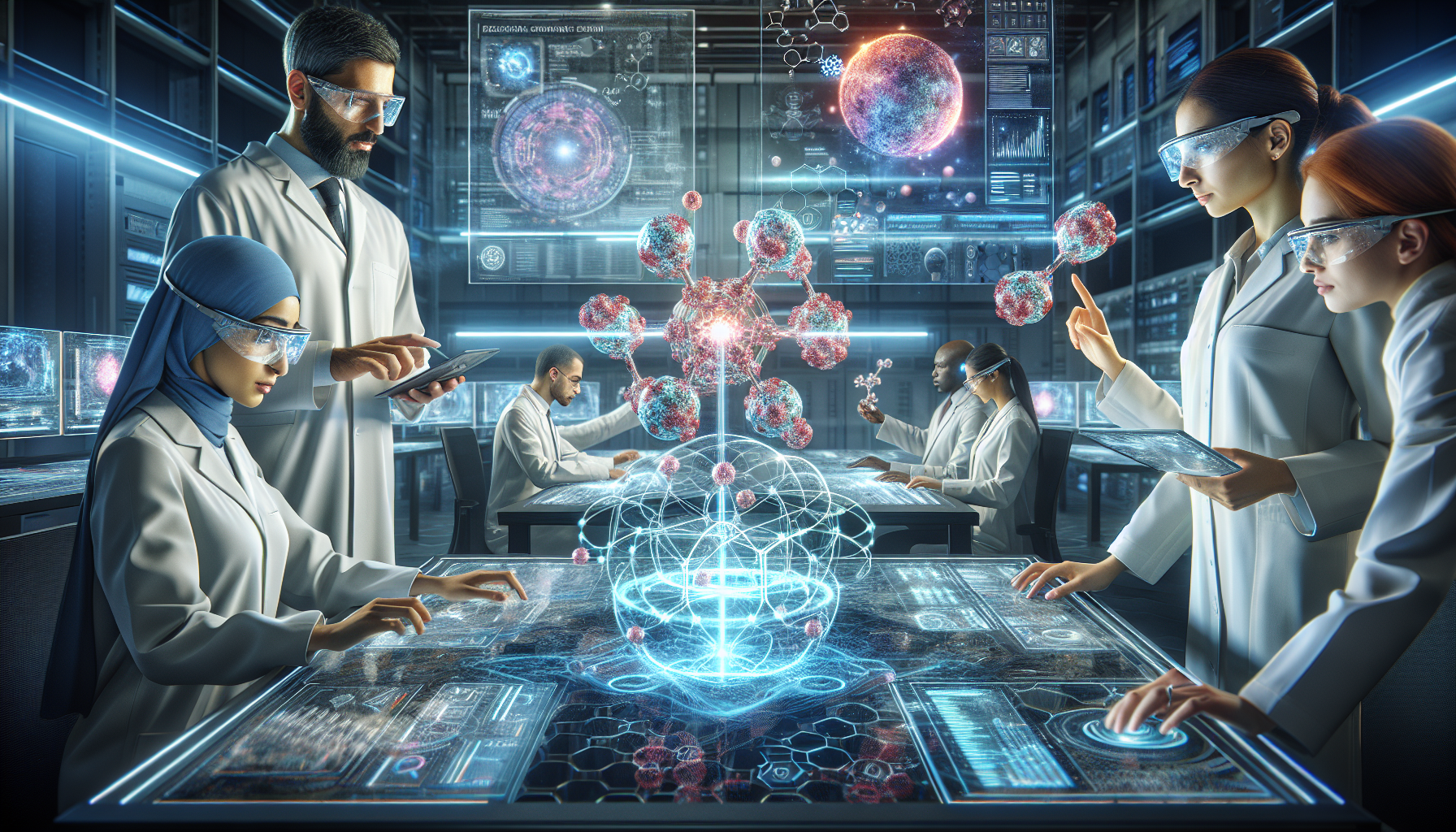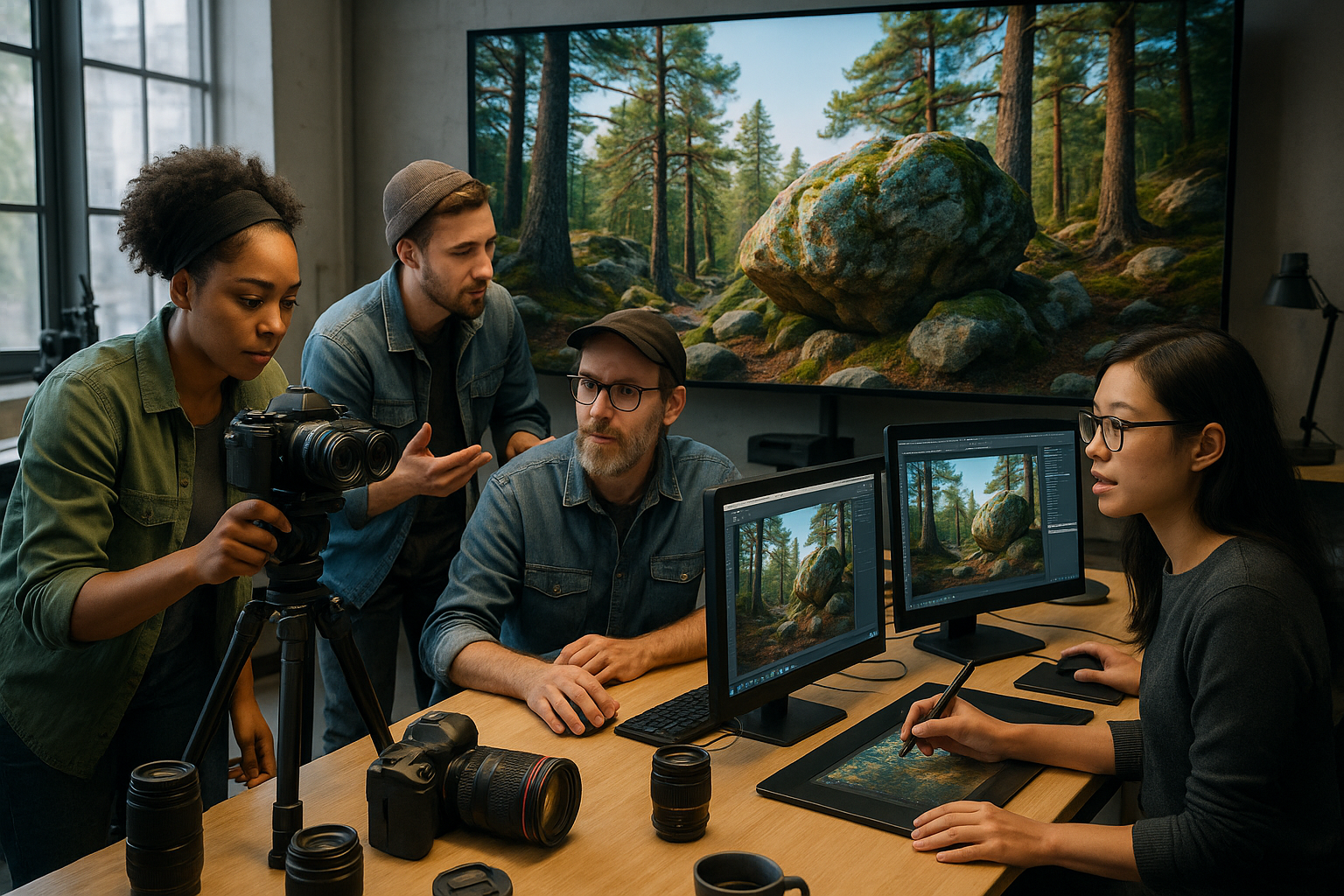In an era where the boundaries of possibility are continually being stretched, the role of scientific advancement is more crucial than ever. The rapid pace of technological and scientific progress is not just transforming industries, but fundamentally reshaping the fabric of our daily lives. From the way we communicate to the methods we employ in tackling climate change, science is at the helm, steering humanity towards a future that once resided only in the realm of imagination. But what exactly are these groundbreaking discoveries, and how are they revolutionizing tomorrow? 🌟 This blog post embarks on a journey through the most recent and significant breakthroughs in the scientific community, offering insights into how these innovations are set to redefine our world.
The wonders of science are manifold, spanning disciplines and transcending boundaries. In recent years, we’ve witnessed unprecedented advancements in fields like artificial intelligence, biotechnology, and renewable energy. These developments are not isolated; they interact with and bolster one another, creating a synergy that propels society forward. In the realm of artificial intelligence, for instance, machines are not just learning from humans but are now capable of predictive analysis that can preemptively solve problems before they arise. Meanwhile, in biotechnology, CRISPR technology is providing new avenues for genetic research, offering the potential to eradicate hereditary diseases. And let’s not overlook the progress in renewable energy, where solar and wind technologies are becoming more efficient and accessible, setting the stage for a sustainable future. Each of these areas will be explored in depth, shedding light on how they’re collectively paving the way for a new era of human achievement.
But why does this matter to you? Because these scientific strides are not just for researchers in lab coats; they’re for everyone. Whether it’s through improving healthcare outcomes, enhancing environmental sustainability, or creating smarter cities, the implications of these advancements are far-reaching and deeply personal. In this post, we’ll delve into the specifics of these innovations and discuss how they will impact your life, your work, and the world at large. 🧬🔬 From tackling pressing global issues to enhancing the quality of everyday life, the transformative power of science holds the key to a brighter, more promising future. As we unpack each topic, we invite you to imagine the possibilities and consider how these changes can be harnessed to benefit society as a whole. Welcome to the future—it’s happening now, and it promises to be extraordinary.
Understanding the Quantum Leap: Exploring Quantum Computing
The world of computing is on the brink of a revolution. Quantum computing, once a theoretical concept confined to the realm of science fiction, is rapidly becoming a tangible reality. Unlike classical computers that use bits as the smallest unit of data, quantum computers use qubits, which leverage the principles of superposition and entanglement. These principles allow qubits to exist in multiple states simultaneously, enabling them to process a vast amount of data at unprecedented speeds. 🌌
Quantum computing promises to solve complex problems that are currently intractable for classical computers. From optimizing supply chain logistics to breaking cryptographic codes, the potential applications are vast and transformative. One of the most anticipated breakthroughs is in the field of drug discovery, where quantum computers could simulate molecular interactions at a level of detail that was previously unimaginable. This could significantly accelerate the development of new medications, providing treatments for diseases that currently have no cure.
To illustrate the potential impact of quantum computing, let’s examine a comparison between classical and quantum computing:
| Aspect | Classical Computing | Quantum Computing |
|---|---|---|
| Basic Unit | Bit | Qubit |
| Processing Capability | Linear | Exponential |
| Key Principles | Binary (0 or 1) | Superposition and Entanglement |
Given the complexity of quantum mechanics, understanding how quantum computing works can be challenging. However, a number of resources are available to demystify this technology. For a deeper dive, I recommend watching the video below:
“Quantum Computers Explained – Limits of Human Technology” by Kurzgesagt – In a Nutshell
AI and Machine Learning: The Evolution of Intelligent Systems
Artificial Intelligence (AI) and Machine Learning (ML) are rapidly transforming industries, reshaping how we interact with technology. AI refers to the development of computer systems that can perform tasks typically requiring human intelligence, such as visual perception, speech recognition, and decision-making. Machine Learning, a subset of AI, involves training algorithms to learn from data and improve over time without explicit programming. 🤖
The integration of AI and ML into various sectors has led to significant advancements. In healthcare, AI-driven systems are being used to analyze medical images, predict patient outcomes, and even assist in surgical procedures. In finance, ML algorithms are employed to detect fraudulent transactions, assess credit risk, and optimize investment strategies. The automotive industry is leveraging AI for the development of autonomous vehicles, promising safer and more efficient transportation.
To better understand the capabilities and impact of AI and ML, let’s explore a comparative table:
| Feature | Artificial Intelligence | Machine Learning |
|---|---|---|
| Definition | Simulates human intelligence processes | Uses data to improve and learn over time |
| Application | Wide-ranging, including robotics and automation | Primarily data-driven tasks |
| Examples | Speech recognition, chatbots | Predictive analytics, recommendation systems |
The evolution of AI and ML continues to accelerate, driven by advancements in data processing power and algorithmic sophistication. To gain further insights into the future of AI, consider exploring the following video:
“The Age of A.I. | Official Trailer” by Robert Downey Jr.
The Frontier of Biotechnology: Genetic Engineering and CRISPR
Biotechnology is at the forefront of scientific innovation, with genetic engineering playing a pivotal role in shaping the future of medicine, agriculture, and environmental conservation. The advent of CRISPR-Cas9 technology has revolutionized genetic editing, allowing scientists to precisely modify DNA sequences with unprecedented accuracy. This breakthrough holds the potential to correct genetic disorders, enhance crop resilience, and even engineer organisms with novel traits. 🧬
Genetic engineering through CRISPR involves the use of a guide RNA to locate specific DNA sequences, which are then cut and edited by the Cas9 enzyme. This technique has already shown promise in treating genetic diseases such as cystic fibrosis and sickle cell anemia. In agriculture, CRISPR is being used to develop crops that are resistant to pests and diseases, reducing the need for chemical pesticides and improving food security.
To further explore the transformative potential of CRISPR, the table below compares traditional genetic engineering techniques with CRISPR:
| Technique | Traditional Genetic Engineering | CRISPR-Cas9 |
|---|---|---|
| Precision | Lower | High |
| Speed | Slower | Rapid |
| Cost | Higher | Lower |
As CRISPR technology continues to advance, ethical considerations and regulatory frameworks are evolving to address concerns around genetic manipulation. To gain a deeper understanding of CRISPR and its implications, I invite you to watch the following video:
“How CRISPR lets us edit our DNA” by Jennifer Doudna on TED
Harnessing Renewable Energy: The Path to a Sustainable Future
The quest for sustainable energy sources has never been more critical. As concerns over climate change and environmental degradation grow, the transition from fossil fuels to renewable energy is imperative. Renewable energy technologies, such as solar, wind, and hydroelectric power, offer clean and sustainable alternatives that can significantly reduce carbon emissions and mitigate the impacts of global warming. 🌍
Solar power harnesses energy from the sun using photovoltaic cells, which convert sunlight into electricity. Wind power, on the other hand, captures kinetic energy from wind turbines, generating electricity without emissions. Hydroelectric power utilizes the potential energy of stored water, driving turbines to produce electricity. These renewable sources are increasingly being integrated into national energy grids, contributing to a more sustainable and resilient energy system.
To understand the benefits and challenges of renewable energy, consider the following comparison:
| Source | Advantages | Challenges |
|---|---|---|
| Solar Power | Abundant, low emissions | Intermittent, requires storage solutions |
| Wind Power | Cost-effective, scalable | Location-dependent, noise concerns |
| Hydroelectric Power | Reliable, high output | Environmental impact, site-specific |
As the world moves toward a greener future, renewable energy will play a pivotal role in achieving sustainability goals. To further explore the potential of renewable energy, I recommend the following video:
“Renewable Energy 101 | National Geographic” by National Geographic

Conclusion
In conclusion, the exploration of the latest breakthroughs in scientific advancements showcases the incredible strides humanity is making towards a brighter future. Throughout this article, we’ve journeyed through numerous scientific domains, highlighting pivotal innovations and their potential impacts on our world. From artificial intelligence and biotechnology to renewable energy and space exploration, each advancement signifies not just progress, but a profound shift in how we perceive and interact with the world around us.
One of the core themes we’ve explored is the transformative power of artificial intelligence. AI is no longer a concept confined to the realm of science fiction; it is now a crucial part of various industries, revolutionizing processes and enhancing efficiencies. Whether through sophisticated algorithms that predict consumer behavior or AI-driven machines that perform complex surgeries, the influence of AI is undeniable. It opens up new avenues for growth, efficiency, and innovation, challenging us to think beyond traditional paradigms.
Biotechnology also stands at the forefront of scientific advancement, offering solutions to some of the most pressing health challenges. Innovations in genetic engineering, such as CRISPR, are paving the way for targeted therapies and personalized medicine, promising to eradicate diseases that were once thought incurable. This leap in biotechnology not only enhances our understanding of human biology but also empowers us to improve the quality of life for millions around the globe.
In the realm of renewable energy, advancements are driving us towards a more sustainable future. The development of more efficient solar panels, wind turbines, and energy storage systems is reducing our reliance on fossil fuels and decreasing our carbon footprint. These innovations are crucial in combating climate change and ensuring that we preserve the planet for future generations. The shift towards renewable energy is not just an environmental imperative but also an economic opportunity, fostering job creation and technological development.
Space exploration continues to captivate our imagination, pushing the boundaries of what is possible. With the advent of reusable rockets and the ambition of manned missions to Mars, space exploration is entering a new era. These efforts not only aim to satisfy our innate curiosity about the universe but also seek to solve earthly problems, such as climate monitoring and communication technologies. The pursuit of knowledge beyond our planet inspires us to dream big and reminds us of the endless possibilities that lie ahead.
The importance of these scientific advancements cannot be overstated. They are the cornerstones upon which we can build a future that is more equitable, sustainable, and innovative. Each breakthrough carries the potential to improve lives, drive economic growth, and address global challenges. However, with great power comes great responsibility. It is imperative that we harness these advancements ethically and equitably, ensuring that they benefit all of humanity and not just a privileged few.
As we reflect on the content of this article, it is clear that we are at the cusp of a new era of scientific discovery. The advancements we have discussed are not just milestones; they are stepping stones towards a future that holds immense promise. It is an exciting time to be alive, to witness these changes and to be part of a generation that is actively shaping the future.
We encourage you, our readers, to engage with these topics, to explore further, and to contribute to the ongoing dialogue about the role of science in our world. Share this article with friends and colleagues to spark conversations and inspire action. Leave your thoughts and comments, as your perspectives are invaluable in enriching our collective understanding. Let us work together to apply what we have learned, to innovate, and to make informed decisions that will benefit society as a whole.
The road to revolutionizing tomorrow is paved with knowledge, curiosity, and collaboration. As we embrace these scientific advancements, let us remain committed to fostering a world that is informed, inclusive, and inspired. The future is not a distant concept; it is a reality we are crafting today. Let us be the architects of a better tomorrow.
Stay curious, stay inspired, and continue to be part of this incredible journey. 🚀🌍
For further exploration, you can check the following resources:
Toni Santos is a visual historian and artisan whose creative lens is captivated by the forgotten marvels of antique optical devices. Through his thoughtful storytelling, Toni revives the instruments that once transformed light into wonder—camera obscuras, magic lanterns, kaleidoscopes, and other ingenious tools that shaped our earliest visual imaginations.
His journey is rooted in a fascination with how humans have long sought to bend, reflect, and reveal the unseen. Whether tracing the mechanical poetry of 19th-century projectors or illustrating the tactile elegance of early lenses, Toni’s work invites us to see vision itself as an evolving art form.
Blending handcrafted design with historical inquiry, Toni brings to life the material soul of these devices—celebrating not just how they functioned, but what they meant. His creations and curated stories illuminate a world where science, illusion, and beauty were intricately linked through glass and brass.
As the curator of Vizovex, Toni shares detailed studies, reconstructed artifacts, and immersive content that help others rediscover the origins of visual technology and the magic of analog perception.
His work is a tribute to:
The craftsmanship behind early visual instruments
The wonder of seeing through the eyes of another century
The intersection of optics, art, and imagination
Whether you’re a collector, a designer, or someone drawn to the lost poetry of vision, Toni welcomes you into a world where light is a storyteller—one prism, one lens, one forgotten invention at a time.





